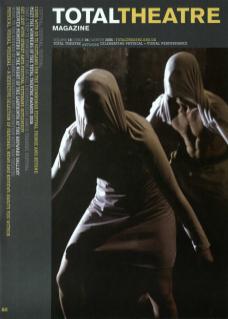There is a distinct sense of anticipation surrounding The Red Ladies’ appearance at the Bullion Room. It’s exciting to catch glimpses of enigmatically trenchcoat-clad ladies in ’40s-style red headscarves and bags proliferating in unexpected sites around the theatre. High on a fire escape; leaning nonchalantly in the square; can that be another in the distance under the bridge? The Clod Ensemble superbly blend the real and the performed in the show’s introduction, spinning a surreal edge to our experience of the streets of Hackney. The intrigue is palpable.
The idea of a marching troupe of 22 Red Ladies who can agitate an urban setting, distorting its reality with their own, before melting away again into the crowds, is an enticing one – but this, like many other ideas in the production, fails to achieve its full potential. When The Red Ladies swoop in, their sheer volume and energy is absorbing, but the performances then lapse into devised set pieces, although complemented by an exhilarating live band. Too often the piece relied only upon the pattern and scale of the performers in movement. The production was naive in their handling of the inevitable gender statement, focusing on arbitrary activities in their women’s lives.
Despite the time period suggested by the costume, references were generalised with the loosest sense of context and so the sense of danger, and an engagement with the real world, were lost. Inevitably certain characters emerged from the crowd, leaving the others in the slightly disappointing posture of extras. And for a sound-led piece, an awareness of dramatic rhythm was surprisingly lacking – the structure was repetitive and we experienced a couple of false endings.
The Red Ladies is ambitious and imaginative in its scope and effectively generates a sense of event: I can understand why this works well on the street. There are moments of musical and almost mathematical brilliance in the arrangement of sound and bodies in space. However, for it to be effective as an indoor theatrical performance a more thoughtful treatment of the characters and ideas is much needed.

